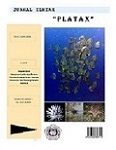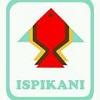Health Condition of Tridacna sp. in the waters of Obi Island, Indonesia
DOI:
https://doi.org/10.35800/jip.8.2.2020.30672Keywords:
Tridacna sp., Heavy metal, Water quality, histopathological.Abstract
Tridacna sp. is one of the protected heritage in Indonesia, because its population has declined dramatically. Tridacna sp. is the largest type of shellfish in water. Like a clam, Tridacna sp. can be used as a bioindicator of the aquatic environment because it can accumulate more heavy metals than other aquatic organisms due to its nature as a filter feeder. This study aims to determine the health condition of Tridacna sp. in the waters of Obi Island with a histopathological analysis approach. The histopathological analysis aims to see the level of tissue damage due to the accumulation of heavy metals. Observation of water quality was also observed in this study. Water quality parameters observed in-situ are temperature, brightness, salinity, pH, and dissolved oxygen. While the water quality parameters observed ex-situ are nitrate, orthophosphate, ammonia, iron (Fe), and nickel (Ni). Observations show that the water temperature is at 27.99 ℃. Water brightness is at 13 m. Salinity is at 32.13 mg / l. The acidity of the waters is 8.64. Ammonia is at 0.4 mg / L. Nitrate is at 0.009 mg / L. Orthopedics are at 0.016 mg / L. Dissolved oxygen waters are at 3.77 mg / L. The iron (Fe) level of water is at 0.6 mg / L. The level of nickel (Ni) waters is at 0.06 mg / L. This study shows the health condition of Tridacna sp. the histological approach shows that the condition of the network has changed. Symptoms of this change indicate the condition of the Tridacna sp. degeneration and cell necrosis. This change is thought to be influenced by heavy metals. Heavy metal content in liquids exceeds the quality standard threshold.
Keywords:Â Tridacna sp.; Heavy metal; Water quality; histopathological.
References
Abdolvand S, Esfahani SK, Dmirchi S. 2014. Mercury (Hg) and Methyl Mercury (MMHg) Bioaccumulation in Three Fish Species (Sea Food) from Persian Gulf. Toxicol. Environ. Health. Sci. 6(3), 192-198. DOI: 10.1007/s13530-014-0204-y
Akomeah E, Davies J, Lindenschmidt K. 2019. Water Quality Modeling of Phytoplankton and Nutrient Cycles of a Complex Cold-Region River-Lake System. Environmental Modeling & Assessment, DOI: 10.1007/s10666-019-09681-x
Athikesavan S, Vincent S, Ambrose T, Velmurugan B. 2006. Nickel induced histopathological changes in the different tissues of freshwater fish, Hypophthalmichthys molitrix (Valenciennes). Journal of Environmental Biology, 27(2): 391-395
Azizi G, Akodad M, Baghour M, Layachi M, Moumen A. 2018. The use of Mytilus spp. mussels as bioindicators of heavy metal pollution in the coastal environment. A review. J. Mater. Environ. Sci. 9, 1170–1181.
Baramaki YR, Ebrahimpour M, Mansouri B, Razaei MR, Babaei H. 2012. Contamination of Metals in Tissues of Ctenopharyngodon idella and Perca fluviatilis, from Anzali Wetland, Iran. Bull. Environ. Contamin. Toxicol. 89, 831-835. DOI: 10.1007/s00128-012-0795-4
Benjamin KB, Co EL, Competente JL, de Guzman DGH. 2019. Histopathological Effects of Bisphenol A on Soft Tissues of Corbicula fluminea Mull. Toxicol. Environ. Health. Sci., 11(1): 36-44. DOI: 10.1007/s13530-019-0386-4
Boyd CE, Pine H. 2010. Application of agrometeorology to aquaculture and fisheries. In: Guide to Agricultural Meteorological Practices (GAMP), Chapter 13. (PP. 1–25). Geneva, Switzerland: World Meteorological Organization
Burt JM, Hinch SG, Patterson DA. 2011. The importance of parentage in assessing temperature effects on fish early life history: a review of the experimental literature. Rev Fish Biol Fisheries, 21: 377–406. DOI: 10.1007/s11160-010-9179-1
Buxton S, Garman E, Heim KE, Lyons-Darden T, Schlekat CE, Taylor MD, Oller AR. 2019. Concise Review of Nickel Human Health Toxicology and Ecotoxicology. Inorganics, 7(89): 1-38. DOI: 10.3390/inorganics7070089
Cáceres R, Malińska K, Marfà O. 2017. Nitrification within composting: A review. Waste Management, https://doi.org/10.1016/j.wasman.2017.10.049
Dane H, Şïşman T. 2020. A morpho-histopathological study in the digestive tract of three fish species influenced with heavy metal pollution. Chemosphere, 242: 125212. DOI: 10.1016/j.chemosphere.2019.125212
Das KK, Reddy RC, Bagoji IB, Das S, Bagali S, Mullur L, Khodnapur JP. Biradar MS. 2019. Primary concept of nickel toxicity – an overview. J Basic Clin Physiol Pharmacol, 30(2): 141–152. DOI: 10.1515/jbcpp-2017-0171
Dohaish EJAB. 2018. Impact of some heavy metals present in the coastal area of Jeddah, Saudi Arabia on the gills, intestine and liver tissues of Lutjanus monostigma. Journal of Environmental Biology, 39: 253-260. DOI: 10.22438/jeb/39/2/PRN-121
Feng W, Wang z, Xu H, Chen L, Zheng F. 2020. Trace metal concentrations in commercial fish, crabs, and bivalves from three lagoons in the South China Sea and implications for human health. Environmental Science and Pollution Research, https://doi.org/10.1007/s11356-019-06712-8
Franklin DA, Edward LL. 2019. Ammonia toxicity and adaptive response in marine fishes - A review. Indian Journal of Geo Marine Sciences 48(03): 273-279
Guo H, Zhou J, Zhang S, Guo Z. 2011. Characteristics of nitrogen and phosphorus removal in a sequencing batch reactor. J. Environ. Sci. 23, S110-S113. https://doi.org/10.1016/S1001-0742(11)61089-9
Hao Z, Chen L, Wang C, Zou X, Zheng F, Feng W, Zhang D, Peng L. 2019. Heavy metal distribution and bioaccumulation ability in marine organisms from coastal regions of Hainan and Zhoushan, China. Chemosphere 226: 340-350. DOI : 10.1016/j.chemosphere.2019.03.132
Haredi AMM, Mourad M, Tanekhy M, Wassif E, Abdel‑Tawab HS. 2020. Lake Edku pollutants induced biochemical and histopathological alterations in muscle tissues of Nile Tilapia (Oreochromis niloticus). Toxicol. Environ. Health. Sci. DOI: 10.1007/s13530-020-00042-w
He J, Strezov V, Kan T, Weldekidan H, Asumadu-Sarkodie S, Kumar R. 2019. Effect of temperature on heavy metal(loid) deportment during pyrolysis of Avicennia marina biomass obtained from phytoremediation. Bioresource Technology 278: 214–222. https://doi.org/10.1016/j.biortech.2019.01.101
Huang H, Yao W, Li R, Ali A, Du J, Guo D, Xiao R, Guo Z, Zhang Z, Awasthi MK. 2018. Effect of pyrolysis temperature on chemical form, behavior and environmental risk of Zn, Pb and Cd in biochar produced from phytoremediation residue. Bioresour. Technol. 249, 487–493. https://doi.org/10.1016/j.biortech.2017.10.020
Ibrahim SA, Tayel SI. 2005. Effect of heavy metals on gills of Tilapia zillii inhabiting the River Nile water (Damietta branch) and El-Rahawy drain. Egypt. J. Aquat. Biol. and Fish, 9: 111-128.
Jaramillo F, Orchard M, Muñoz C, Zamorano M, Antileo C. 2018. Advanced strategies to improve nitrification process in sequencing batch reactors - A review. J. of Env. Man, 218: 154-164. https://doi.org/10.1016/j.jenvman.2018.04.019
Jia YY, Wang L, Qu ZP, Yang ZG. 2018. Distribution, contamination and accumulation of heavy metals in water, sediments, and freshwater shellfish from Liuyang River, Southern China. Environ. Sci. Pollut. Res. 25, 7012–7020.
Jitar O, Teodosiu C, Oros A, Plavan G, Nicoara M. 2014. Bioaccumulation of heavy metals in marine organisms from the Romanian sector of the Black Sea. N. Biotechnol. DOI: 10.1016/j.nbt.2014.11.004
Kale VS. 2016. Consequence of temperature, Ph, turbidity and dissolved oxygen water quality parameters. Int J Adv Res Sci Eng Technol 3:186–190
Karbassi AR, Monavari SM, Nabi Bidhendi GR, Nouri J, Nematpour K. 2008. Metal pollution assessment of sediment and water in the Shur River. Environ Monit Assess, 147: 107–116. DOI: 10.1007/s10661-007-0102-8
Keene NA, Reusser SR, Scarborough MJ, Grooms AL, Seib M, Santo Domingo J, Noguera DR. 2017. Pilot plant demonstration of stable and efficient high rate biological nutrient removal with low dissolved oxygen conditions. Water Res. 121: 72-85. https://doi.org/10.1016/j.watres.2017.05.029
Khan UA, Kujala K, Nieminen SP, Räisänen ML, Ronkanen A. 2019. Arsenic, antimony, and nickel leaching from northern peatlands treating mining influenced water in cold climate. Science of the Total Environment 657 : 1161–1172. DOI: 10.1016/j.scitotenv.2018.11.455
Kim Y, Kim BK, Kim K. 2009. Distribution and speciation of heavy metals and their sources in Kumho River sediment, Korea. Environmental Earth Sciences, 60 : 943-952. DOI: 10.1007/s12665-009-0230-2
Kodama K, Lee JH, Oyama M, Shiraishi H, Horiguchi T. 2012. Disturbance of benthic macrofauna in relation to hypoxia and organic enrichment in a eutrophic coastal bay. Mar. Environ. Res. 76, 80–89
Korun J, Timur G. 2008. Marine Vibrios Associated With Diseased Sea Bass (Dicentrarchus labrax) In Turkey. Journal of Fisheries Sciences. 2(1): 66-76. DOI: 10.3153/jfscom.2008
Kuypers MMM. 2015. Microbiology: a division of labour combined. Nature 528: 487–488
Mansouri B, Ebrahimpour M, Babaei H. 2012. Bioaccumulation and elimination of nickel in the organs of black fish (Capoeta fusca). Toxicol. Ind. Health. 28, 361-368
Maleki A, Azadi NA, Mansouri B, Majnoni F, Rezaei Z, Gharibi F. 2015. Health Risk Assessment of Trace Elements in Two Fish Species of Sanandaj Gheshlagh Reservoir, Iran. Toxicol. Environ. Health. Sci. 7(1), 43-49. DOI: 10.1007/s13530-015-0219-z
Menteri Negara Lingkungan Hidup, Indonesia. 2004. Keputusan Menteri Negara Lingkungan Hidup Nomor 51 Tahun 2004 tentang Baku Mutu Air Laut Untuk Biota Laut. Jakarta
Menteri Lingkungan Hidup Dan Kehutanan Republik Indonesia. 2018. Peraturan Menteri Lingkungan Hidup Dan Kehutanan Republik Indonesia Nomor P.92/MENLHK/SETJEN/KUM.1/8/2018 Tentang Perubahan Atas Peraturan Menteri Lingkungan Hidup Dan Kehutanan Nomor P.20/MENLHK/SETJEN/KUM.1/6/2018 Tentang Jenis Tumbuhan Dan Satwa Yang Dilindungi
Murphy AE, Kolkmeyer R, Song B, Anderson IC, Bowen J. 2019. Bioreactivity and Microbiome of Biodeposits from Filter-Feeding Bivalves. Microbial Ecology, https://doi.org/10.1007/s00248-018-01312-4
Nour HES. 2020. Distribution and accumulation ability of heavy metals in bivalve shells and associated sediment from Red Sea coast, Egypt. Environ Monit Assess, 192: 353. https://doi.org/10.1007/s10661-020-08285-3
Paschoalinia AL, Savassia LA, Arantesb FP, Rizzoa E, Bazzolib N. 2019. Heavy metals accumulation and endocrine disruption in Prochilodus argenteus from a polluted neotropical river. Ecotoxicology and Environmental Safety 169: 539–550. DOI : 10.1016/j.ecoenv.2018.11.047
Poleksic V, Lenhardt M, Jaric I, Djordjevic D, Gacic Z, Cvijanovic G, Raskovic B. 2010. Liver, Gills, And Skin Histopathology And Heavy Metal Content Of The Danube Sterlet (Acipenser ruthenus Linnaeus, 1758). Environmental Toxicology and Chemistry, 29(3): 515–521
Roots P, Wang Y, Rosenthal AF, Griffin JS, Sabba F, Petrovich M, Yang F, Kozak JA, Zhang H, Wells GF. 2019. Comammox Nitrospira are the dominant ammonia oxidizers in a mainstream low dissolved oxygen nitrification reactor. Water Research 157, 396-405. https://doi.org/10.1016/j.watres.2019.03.060
Saidov DM, Kosevich IA. 2019. Effect of Heavy Metals (Cu, Co, Cd) on the Early Development of Mytilus edulis (Mollusca; Bivalvia). Russian Journal of Ecology, (50)1: 58–64. DOI: 10.1134/S1067413619010077
Thabet IA, Tawadrous W, Samy AM. 2019. Pollution induced change of liver of Oreochromis niloticus: metals accumulation and histopathological response. World Journal of Advanced Research and Reviews 02(02), 025–035. DOI : 10.30574/wjarr.2019.2.2.0020
Turkmen A, Turkmen M, Tepe YI, Akyurt I. 2005. Heavy metals in three commercially valuable fish species from Iskenderun Bay, Northern East Mediterranean Sea, Turkey. Food Chemistry, 91, 167–172
Triebskorn R, Telcean I, Casper H, Farkas A, Sandu C, Stan G, Colărescu O, Dori T, Köhler H. 2008. Monitoring pollution in River Mureş, Romania, part II: Metal accumulation and histopathology in fish. Environ Monit Assess 141:177–188. DOI : 10.1007/s10661-007-9886-9
USEPA. 1986. Quality criteria for water EPA 440/5-86-001. United States Environmental Protection Agency, Office of Water Regulations and Standards, Washington DC
Varsamos S, Nebel C, Charmantier G. 2005. Ontogeny of osmoregulation in postembryonic fish: A review. Comparative Biochemistry and Physiology, Part A 141: 401–429. DOI: 10.1016/j.cbpb.2005.01.013
Downloads
Published
How to Cite
Issue
Section
License
COPYRIGHT
Authors who publish with this journal agree to the following terms:
Authors hold their copyright and grant this journal the privilege of first publication, with the work simultaneously licensed under a Creative Commons Attribution License that permits others to impart the work with an acknowledgment of the work's origin and initial publication by this journal.
Authors can enter into separate or additional contractual arrangements for the non-exclusive distribution of the journal's published version of the work (for example, post it to an institutional repository or publish it in a book), with an acknowledgment of its underlying publication in this journal.
Authors are permitted and encouraged to post their work online (for example, in institutional repositories or on their website) as it can lead to productive exchanges, as well as earlier and greater citation of the published work (See The Effect of Open Access).


















